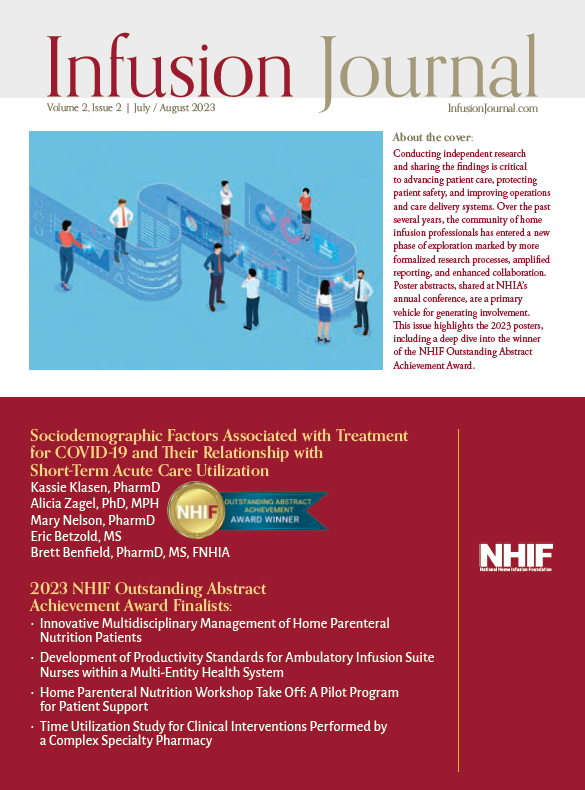Michelle Simpson, PharmD, BCSCP, MWC | Editor-in-Chief, Infusion Journal
Poster presentations are an effective mode of scientific communication involving science and the arts. Besides being aesthetically well-constructed, a research poster must incorporate scientific precision, with high-quality illustrations and compelling visual narratives to present information that balances attracting attendees to the poster and communicating research findings.
Poster presentations are a valuable component of professional conferences, meetings, and congresses. Presenters come together to share their research findings and innovative ideas with colleagues. Attendees view poster presentations to develop new ideas to incorporate into their practice. Poster presentations display visual summaries of research targeting people participating in a specific conference or meeting.
This issue of Infusion Journal contains research from the Poster Session at the 2023 NHIA Annual Conference. Each year, NHIF awards one poster with the Outstanding Abstract Achievement Award, and this year’s winning poster research is detailed in the article by Klasen et al., “Sociodemographic Factors Associated with Treatment for COVID-19 and Their Relationship with Short-Term Acute Care Utilization.” Additional Infusion Journal pages are devoted to showcasing the poster content and layout of finalists for the 2023 NHIF award. Titles, authors, and background information for the poster abstracts displayed at the 2023 annual conference are also listed.
Traditional poster layouts provide familiarity and detail using specific sections to introduce the topic and describe the methodology, results, and conclusions. This recognizable format, combined with tables of data and graphic analysis of large datasets, provides a detailed review of the study design and findings.
Still, presenters may want to consider the benefits of a different poster design when preparing for their next conference. Several alternatives for making posters more engaging for the audience are gaining popularity.1 Poster authors have more options for creating their posters using a layout that fosters a concise presentation of ideas using graphic design principles, such as the placement of negative space and a simplified representation of ideas. Poster templates are available that emphasize typography and utilization of bright colors, with a summary of critical points as text or an infographic.1
A study by Oronje et al. evaluated the impact of traditional poster format compared to billboard-style poster designs on attendee and presenter attitudes and behaviors. The study found that attendees preferred billboard-style poster layout over the traditional layout for learning, ease of interaction, and facilitating scientific discovery. Presenters perceived the billboard-style layout as being easier to prepare and more interactive to attendees.2
Other non-traditional formats highlight the main idea or ask questions that start conversations with peers. A trend in emerging poster templates and layouts is to choose short statements that cover the direct result of the research and write them in prominent text so that it is impossible for attendees not to read them as they walk past.1
Presenters want their work to get noticed, and anticipating audience perception of a newer design may feel risky. Adding non-traditional poster layouts to standard traditional poster template options can help these designs gain popularity and more general use. When deciding amongst diverse poster layouts, discuss with your research project team which poster design would be most appropriate for the type of study, research question, audience, and presentation time allotment at the poster session. Participants in the study by Oronje et al. felt that future improvements to the billboard-style layout should focus on communicating study methods and rigor more prominently, in addition to the key takeaway.2
Poster abstract submission for NHIA’s Annual Conference 2024 opens this summer, and NHIA offers valuable resources supporting infusion research, including poster development.


